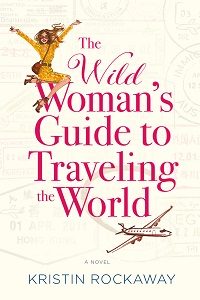Sex In Women’s Fiction, Part One: Writing Sex
Part one of a three part series about Sex In Women’s Fiction
 I write stories about women – stories that chronicle the wonderful, harrowing, funny, mess, fabulous, and occasionally sordid details of their lives. And, inevitably, there comes a time in every manuscript when my main character decides that she’s going to have sex. Before she gets down to business, though, I always ask myself an important question: will she be keeping the lights on, or will she be closing the door?
I write stories about women – stories that chronicle the wonderful, harrowing, funny, mess, fabulous, and occasionally sordid details of their lives. And, inevitably, there comes a time in every manuscript when my main character decides that she’s going to have sex. Before she gets down to business, though, I always ask myself an important question: will she be keeping the lights on, or will she be closing the door?
In other words, am I going to write this sex scene out in vivid detail, or am I going to gracefully skip over it and let the reader fill in the gaps?
The answer isn’t always straightforward. It might depend on the tone of the story or the personality of the character, or even how many sex scenes have already been included – or excluded. There’s no one right way to approach writing sex, but deciding when and how to incorporate a sex scene into your stories can be tricky.
So I approached the women’s fiction author hivemind with this dilemma, and they graciously shared their insights on how to decide whether a sex scene will strengthen your story or make it go limp.
When to Keep the Lights On
One thing everyone agrees on: you shouldn’t write a sex scene just for the hell of it. While gratuitous sex might be fun to write (and, sometimes, to read), unless it’s contributing to the greater objective of your story, consider it dead weight. Like any other narrative element, sex scenes should be written with a purpose.
So, how do you know if a sex scene is purposeful? Here are a few key questions you can ask yourself:
- Does it advance the plot? Even if they’re not the focal point of our stories, romantic relationships often play a big part in women’s fiction. And as Renée Carlino, author of Wish You Were Here, says, “Intimate relationships usually evolve to include sex, so it would seem integral to any story that is centered around an intimate relationship.” If your characters’ relationship is progressing (or regressing), a carefully crafted sex scene can provide an important pivot point in your plot.
- Does it develop the character(s)? According to Colleen Oakley, author of Close Enough to Touch, “How two people approach their sex lives and sex can reveal a lot about what they are going through at any given time.” Showing how our characters interact with their partners in such an intimate, private setting helps give a glimpse into their motivations, their fears, and their vulnerabilities.
- Does it help to set the mood? Evoking emotion in our readers is what makes our stories powerful. A sex scene can stir up all sorts of feelings – and not just provocative ones. After all, not every sexual encounter is a blissful one. It can be humorous or poignant. And sex can also be an effective way to increase tension or raise stakes within a story.
When to Close the Door
Just because sex scenes have a purpose, though, that doesn’t mean you have to write them. There may be other ways to get your point across without going into graphic detail. Sometimes, it’s only the build-up to a sex scene that’s important to advancing the plot, in which case, closing the door is probably more appropriate. Amy E. Reichert, author of The Simplicity of Cider, writes “fade to black” scenes in her novels, which “focus on the swoony anticipation” of the act, rather than the act itself.
Jessica Brockmole, author of Woman Enters Left, agrees. “Sometimes all that’s required is for the reader to know sex occurred, not how it occurred,” she says, adding that she “often finds sex scenes unnecessary in fiction, both as a reader and a writer.” As a writer of historical fiction, Jessica says that her stories “include characters in particular places and eras for which sex might be unrealistic or even anachronistic.” In cases like this, excluding sex scenes may strengthen your story.
The Challenges of Writing Sex
Writing a good sex scene isn’t easy, though. Many authors report that they struggle to find the right language to use – though they should probably all follow Colleen Oakley’s advice, and avoid using the term “throbbing member.”
Others talk about finding balance, such as Cassandra Dunn, author of The Art of Adapting, who says, “It’s challenging to make [sex scenes] compelling but not corny.” Loretta Nyhan, author of All the Good Parts, says she always tries to write “something sexy but not gag-inducing.” And Jennifer Robson, author of Goodnight from London, says, “There’s a fine line between sensual and squicky.”
Finally, several authors mention an unexpected roadblock to writing sex: Mom. Laura Heffernan, author of Sweet Reality, says, “I enjoy writing sex scenes, but I don’t put them in my books because my mom is going to read them.”
When it comes to sex scenes, writing isn’t the only challenge. There’s also the matter of industry standards. In the next installment of our series, we’ll explore publishing expectations for sex in women’s fiction novels and beyond.
—
Kristin Rockaway is a native New Yorker with an insatiable case of wanderlust. After working in the IT industry for far too many years, she finally traded the city for the surf and chased her dreams out to Southern California, where she spends her days happily writing stories instead of software. Her debut novel, The Wild Woman’s Guide to Traveling the World, was released from Hachette Book Group in June 2017. When she’s not writing, she enjoys spending time with her husband and son, browsing the aisles of her neighborhood bookstores, and planning her next big vacation.
Website: http://kristinrockaway.com/
Goodreads: http://www.goodreads.com/author/show/15294188.Kristin_Rockaway
Twitter: https://twitter.com/KristinRockaway
Facebook: https://www.facebook.com/KristinRockaway
Instagram: https://www.instagram.com/KristinRockaway/
Pinterest: https://www.pinterest.com/KristinRockaway/
About THE WILD WOMAN’S GUIDE TO TRAVELING THE WORLD
 Fans of Sophie Kinsella and The Devil Wears Prada will love this smart, sexy debut novel of wanderlust.
Fans of Sophie Kinsella and The Devil Wears Prada will love this smart, sexy debut novel of wanderlust.
Objectively, Sophie is a success: she’s got a coveted job at a top consulting firm, a Manhattan apartment, and a passport full of stamps. It isn’t quite what she dreamed of when she was a teenager dog-earing pages in exotic travel guides, but it’s secure. Then her best friend bails just hours after they arrive in Hong Kong for a girls’ trip, and Sophie meets Carson, a free-spirited, globetrotting American artist.
In the midst of their whirlwind vacation romance, Carson invites Sophie to join him on his haphazard journey around the world. While the brief international jaunts she sneaks in between business trips don’t feel like enough, Sophie is far too practical to throw away her five-year plan on a whim. Yet Carson’s offer forces her to question whether the reliable life she’s chosen is really what she wants–and she soon discovers that his feelings for her run deeper than she realized.
Category: How To and Tips























